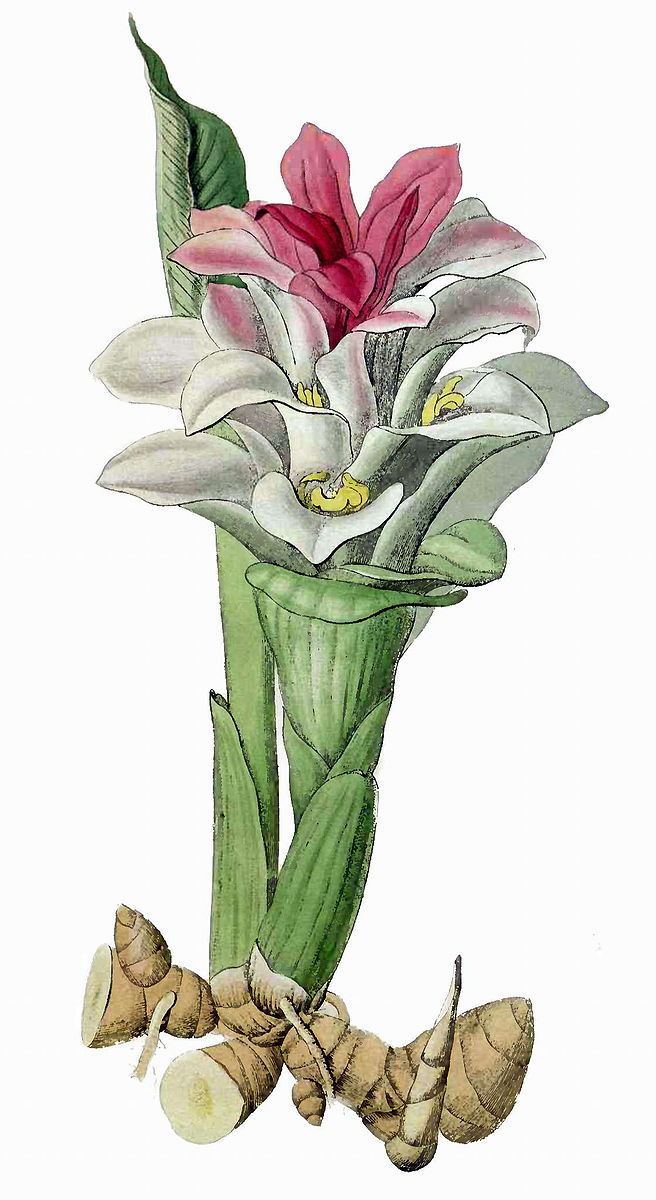 | ||
The Paradisus Londonensis (full title The Paradisus Londonensis : or Coloured Figures of Plants Cultivated in the Vicinity of the Metropolis) is a book dated 1805–1808. It consists of coloured illustrations of 117 plants drawn by William Hooker, with explanatory text by Richard Anthony Salisbury.
Contents
Publication
The Paradisus Londinensis was constructed as two volumes, each of two parts. The plates were in one part, the text in the other. The title page of the first volume and part bears the date 1805 and identifies the illustrator and publisher as Hooker. The title page of the second part identifies the author of the text as Salisbury. It has often been catalogued as 1805–1807, although some later plates are dated 1808. The International Plant Names Index dates the parts as follows:
New botanical names
The Paradisus Londinensis (abbreviated to Parad. Lond. in botanical citations) is a significant source of botanical names, with around 150 attributed to Salisbury on the basis of this publication. Some have been superseded, but others are still in use. The names include:
Dispute with Smith
The Paradisus Londinensis preserves a record of a dispute between Salisbury and James Edward Smith which had (and still has) consequences for the acceptance of botanical names first published by Salisbury, in this work and others. Smith and Salisbury had become friends while studying at the University of Edinburgh. Later in life, in 1802, they quarrelled. Smith was a strong supporter of Linnaeus's systema sexuale (sexual system) for classifying plants. He had bought Linnaeus's entire collection of books, manuscripts and specimens, and founded the Linnean Society in 1788. Salisbury on the other hand was a supporter of the natural system of classification, in particular that of Antoine Laurent de Jussieu, published in Genera Plantarum in 1789 – the system used in Paradisus Londinensis.
In his 1807 work, An introduction to physiological and systematical botany, Smith had used newly discovered plants, which he did not name, from the west coast of British Columbia, Canada, to support the view that the tepals of lilioid monocots were actually sepals, since their flowers had what Smith regarded as six internal petals. In The Paradisus Londinensis, in the notes to number 98, dated 1 March 1808, Salisbury named these plants as the genus Hookera with two species H. coronaria and H. pulchella. (The latter is illustrated as number 117.) Salisbury pointed out that the supposed internal petals were actually stamens (three sterile ones and the bases of three normal ones). He also disputed Smith's association of the plant with Agapanthus, placing it instead with Allium. He says "I regret much to dissent so often from the celebrated lecturer [Smith]".
Shortly afterwards in 1808, Smith named a moss genus Hookeria and read to the Linnean Society a formal description of a new genus, based on the same species as Salisbury's Hookera coronaria, naming the genus Brodiaea in honour of Scottish botanist James Brodie. (The presentation was not published until 1810.) George Boulger, writing in the Dictionary of National Biography, says that Smith's actions were deliberately intended to deprive Salisbury of credit for the genus Hookera. In the text for figure 117, dated 1 September 1808, Salisbury says that "Smith, to suit his own purpose, was utterly silent" on the prior naming of the genus by Salisbury, and that Smith's "multiplied acts of injustice to me whether open or concealed, I sincerely forgive."
If it was Smith's deliberate intention to suppress Salisbury's botanical names by giving a moss a confusingly similar name and by renaming Hookera to Brodiaea, he was, initially at least, successful. James Britten, writing much later in 1886, argued that the then established name Brodiaea should be replaced by Hookera, which had priority. (He also showed how many of Salisbury's other names had been ignored.) However, Smith's Hookeria and Brodiaea had become so widely used that they were made conserved names, and Hookera was not reinstated. Salisbury's epithet coronaria in his Hookera coronaria is still used in the combination Brodiaea coronaria. As of September 2013, Hookera pulchella is considered as a synonym, either in full or in part, for Dichelostemma congestum or Dichelostemma capitatum, and the epithet pulchella is not used, although Britten had argued for its priority.
Contents
The 117 plants illustrated in The Paradisus Londinensis are listed below. Salisbury's original orthography is given in brackets where different from modern usage. Accepted names as of September 2013 are taken from The Plant List, unless otherwise referenced. An asterisk indicates that no accepted name has been found.
